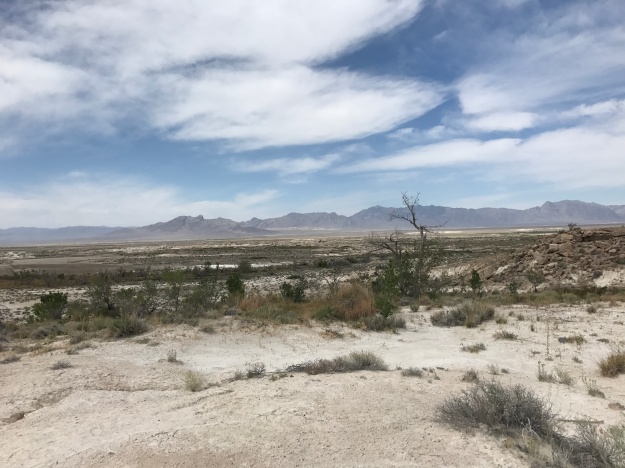
🐟🌸🔁
Volunteer gig
So, that commitment I was telling you about in our last installment of the blog … one of the things that RV life provides is a lot of free time and solitude, but after 10 months on the road, I was yearning for interaction with people and some purpose a 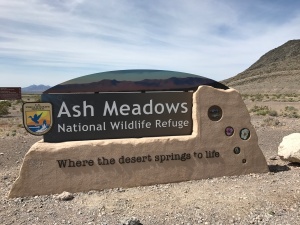 few days a week, so I signed us up for a volunteer gig at the Ash Meadows Wildlife Refuge in Southern Nevada. Camp hosting and volunteering is something that a lot of full time RVers do, partly for meeting new people and keeping busy, and partly for the benefit of a free spot and hookups for a bit. I was wanting to experience and try the different aspects of this lifestyle, and this opportunity seemed to be a good one to start with. We also discovered that most volunteers have their jobs and dates set up 6-9 months in advance, so we were a little late to the party. Nonetheless, this one was available, the location and amount of time fit with our plan to go to the Reno area for the summer, and we are familiar with the area, so Ern agreed to go along with me on this new experience.
few days a week, so I signed us up for a volunteer gig at the Ash Meadows Wildlife Refuge in Southern Nevada. Camp hosting and volunteering is something that a lot of full time RVers do, partly for meeting new people and keeping busy, and partly for the benefit of a free spot and hookups for a bit. I was wanting to experience and try the different aspects of this lifestyle, and this opportunity seemed to be a good one to start with. We also discovered that most volunteers have their jobs and dates set up 6-9 months in advance, so we were a little late to the party. Nonetheless, this one was available, the location and amount of time fit with our plan to go to the Reno area for the summer, and we are familiar with the area, so Ern agreed to go along with me on this new experience.
We had visited the refuge back in the fall when we were trekking south, and were really impressed with the facility and how it showcases the beautiful springs and history of the area. Doing this volunteer stint showed us even more interesting and intriguing things about the refuge, the water, the plants and the animals. The way that one of the staff described Ash Meadows to visitors is that it is the opposite of 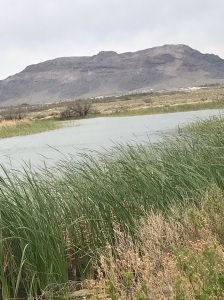 an island – it is a whole bunch of water surrounded by a desert … there are over 50 springs and seeps on the refuge, putting out about 11,000 gallons of water per minute, making it the oasis of the Mojave Desert. Since we were there in the spring, there were different wildflowers blooming and quite a few different types of birds – which dictated some of the kind of visitors that came through. There is a wildlife and wildflower sighting board for visitors to write down what they see, and there were quite a few “birders” that came through and I was just awestruck by how much they knew about so many birds – we had reference books to look at to help identify what people either described or showed us pictures of, but man! there are so many variations even on one type of bird: male or female, adult or juvenile, eastern or western, etc. So, we learned a lot about some of the birds that were there, and kept the binoculars handy at our RV spot to be able to catch sight of a white crested warbler, or phainopepla , or belted kingfisher 🐦🕵🏽
an island – it is a whole bunch of water surrounded by a desert … there are over 50 springs and seeps on the refuge, putting out about 11,000 gallons of water per minute, making it the oasis of the Mojave Desert. Since we were there in the spring, there were different wildflowers blooming and quite a few different types of birds – which dictated some of the kind of visitors that came through. There is a wildlife and wildflower sighting board for visitors to write down what they see, and there were quite a few “birders” that came through and I was just awestruck by how much they knew about so many birds – we had reference books to look at to help identify what people either described or showed us pictures of, but man! there are so many variations even on one type of bird: male or female, adult or juvenile, eastern or western, etc. So, we learned a lot about some of the birds that were there, and kept the binoculars handy at our RV spot to be able to catch sight of a white crested warbler, or phainopepla , or belted kingfisher 🐦🕵🏽
Many of the spring desert wildflowers were in bloom: beaver tail cactus, Yerba mansa, sacred datura, alkali heliotrope, desert sunray, niterwort
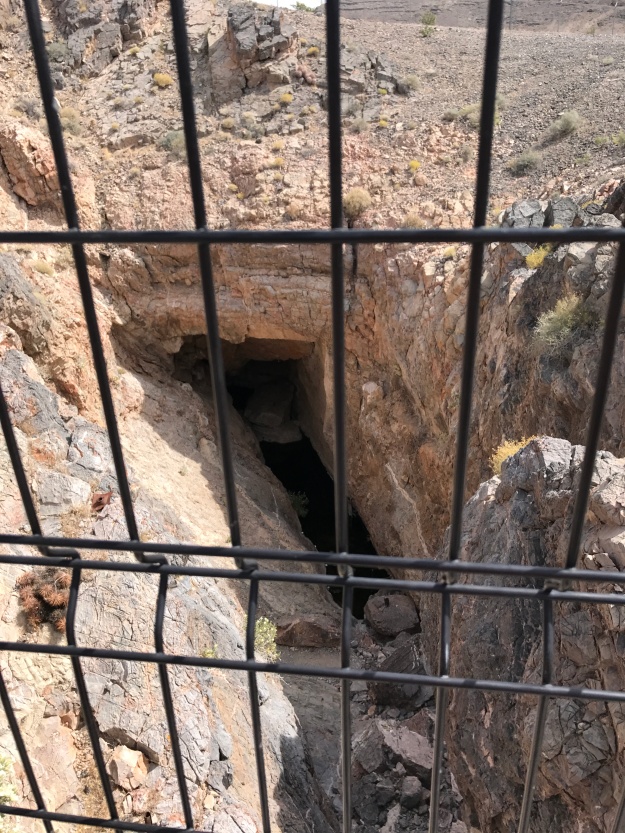
View of Devils Hole from the public viewing platform
Save the Pup Fish!!
Some of the visitors arrived by accident, following their GPS/Google Map directions to what they thought was Death Valley – the first item to come up for Death Valley on a map search is “Death Valley NP, Devils Hole” which is technically Death Valley, but just a small section of land containing the Devils Hole spring that just happens to be
Devils Hole with the monitoring platforms and fish biologists
in the Refuge, about 50 miles away from the main location of Death Valley. The background is that when Devils Hole and its precarious population of pup fish were discovered, there was no refuge yet and there was no endangered species act yet; the people who wanted to preserve the pup fish found a loophole to put it under the protection of the national parks system because a type of rare travertine rock found in Death Valley was also found in Devils Hole – so it came under the national parks umbrella. That’s the long way around explanation as to why some people showed up at the visitors center – but most were good natured about it and happy to have discovered another interesting desert attraction – and they could continue on to Death Valley proper without having detoured too far off the route. Devils Hole itself
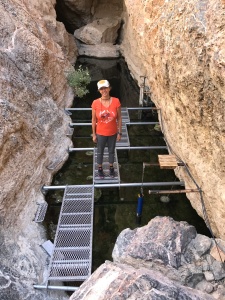
Pupfish below!
is not accessible to the general public, because of how sensitive the small habitat is, and because they have quite a bit of instrumentation there, monitoring temperature and water levels – there is a viewing platform high above but you can’t see the fish from it. As a volunteer, I was lucky to be able to go down to the hole and actually stand above it to see the fish and watch the biologists retrieve some pup fish eggs. The other big part of saving this little guy is what is called the Fish Conservation Facility – also on the refuge, where they are growing and maintaining a “lifeboat” population of Devils Hole Pup Fish, in case something totally wipes out the ones living in the hole. A few times, the natural population has dipped to from 130 to 35, so they got a little freaked out and decided to raise some alternates :). The egg gathering process I was a part of is to keep growing more fish in the lifeboat group – they have had some good success: the lifeboat population stands at about 70 now. Small fish, small numbers, but BIG budget to save them – the facility is equipped with an incredibly elaborate filtering and monitoring water system, and they have recreated the dimensions and shape of the natural Devils Hole in concrete on site as a habitat for the lifeboat group.
Lots of fish water and filtering at the facility – an egg retrieval mat
The thing that really struck me about Devils Hole is just how small it really is, and how “by chance” it was discovered by white travelers- it is on the side of a barren hill – nothing to indicate that there is any water there, let alone a hot spring (the average temperature is 92) – the native tribes of the area no doubt know it existed, because Ash Meadows was a kind of neutral zone for Shoshone and Paiutes to gather at certain times of the year, but when you look across the landscape of Ash Meadows and Amargosa Valley – there just wouldn’t be a reason to even climb the small hill or explore that spot – maybe you can see steam rising from it in the winter 🤔?
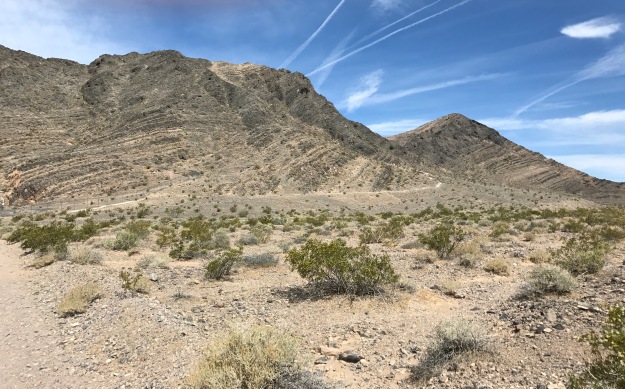
Devils Hole – in the side of this dry desert hill
Life is Funny
I have mostly written about the “good parts” and exciting or interesting things of the past year of full time life on the road, as one is wont to do on social media, but there are parts of this lifestyle that I found I did not like and did not anticipate – which has been the subject of many conversations about why and what to change and how to reimagine our next move. I have struggled with being a “failure” at full time RVing and retirement because I did not love it like Ern does, and even with the new sights and experiences we were enjoying, I could not dismiss feeling too idle and homesick for the family, friends and life we had in Reno. And sometimes a solution presents itself! 🔙 My old job opened up, and our old apartment did too – so we are returning to Reno this month. How many people get a chance to hit reset?
There will still be RV travel in our life, and still be stories to share, so you will still get a blog post notification from us, just not as often and not from the “full timers” perspective. We have great memories from this past year that we will always carry with us, and look forward to continue exploring of this beautiful country from a home base. Thanks to everyone for following our blog and your enthusiasm for our stories. ♥️
Native ash tree, Mojave aster, a parasite called dodder: like silly string clinging to desert holly
Sometimes life teaches you a lesson and then hands you what you need.
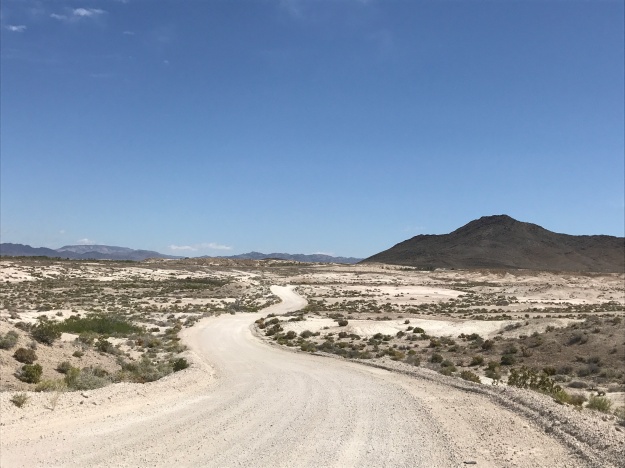
We would love to hear from you … Please leave a comment using the link at the top of the post — “leave a reply
















